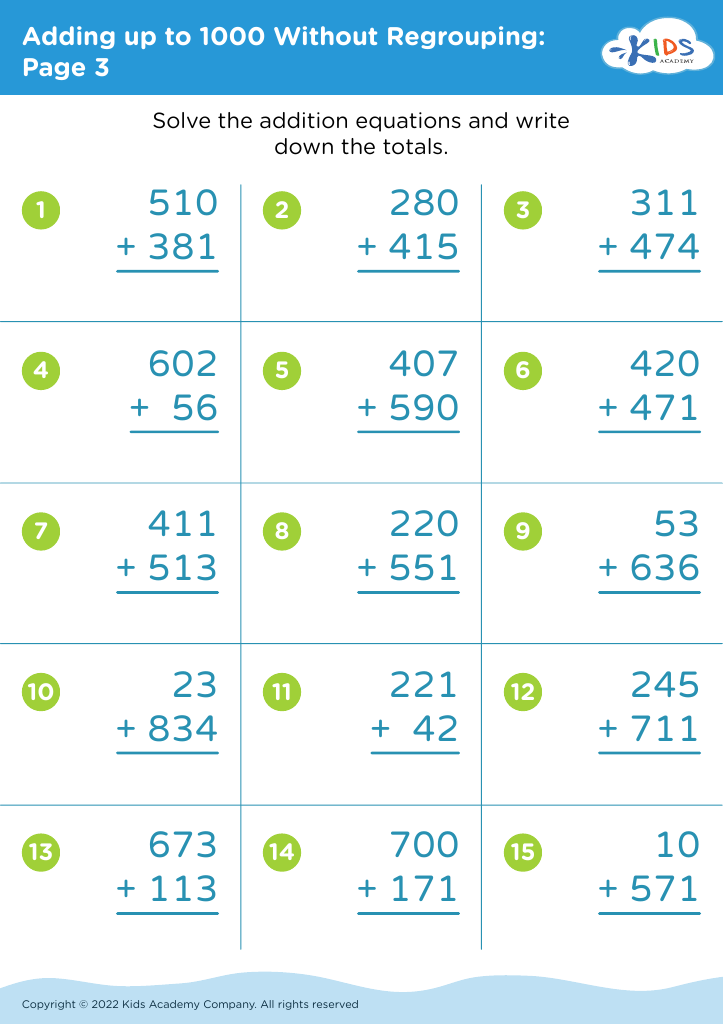Understand patterns Worksheets for Ages 4-9
7 filtered results
-
From - To
Discover our engaging "Understand Patterns Worksheets" designed for children ages 4-9! These interactive worksheets help young learners recognize and develop crucial pattern skills through fun activities tailored to their developmental needs. Our resources cover a variety of pattern types, including shapes, colors, and numbers, ensuring a foundational understanding of patterns in everyday life. Each worksheet is thoughtfully crafted to ignite curiosity and foster critical thinking, making learning enjoyable. Ideal for classroom use or at-home practice, our worksheets are perfect for enhancing cognitive skills while promoting creativity. Browse our collection today and support your child's journey to mastering patterns!
Understanding patterns is a foundational skill for children aged 4-9, and it plays a crucial role in their cognitive and emotional development. Patterns are everywhere— in nature, music, math, and daily routines. When children learn to recognize and create patterns, they enhance their problem-solving skills and critical thinking abilities.
For parents and teachers, fostering an understanding of patterns prepares children for more complex mathematical concepts, such as addition, subtraction, and algebra, later in their education. Engaging children with patterns can spark their curiosity and creativity, promoting a sense of accomplishment when they successfully identify or extend a pattern.
Additionally, learning about patterns helps children to develop self-regulation and flexibility in their thinking. It encourages them to look for connections and make predictions, skills that are valuable not only in academics but also in life situations.
Finally, by exposing children to patterns through games, songs, and everyday activities, parents and teachers can create positive learning experiences, instilling a love for learning. This early foundation in pattern recognition can lead to greater academic success and a lifelong appreciation for patterns in the world around them.
























